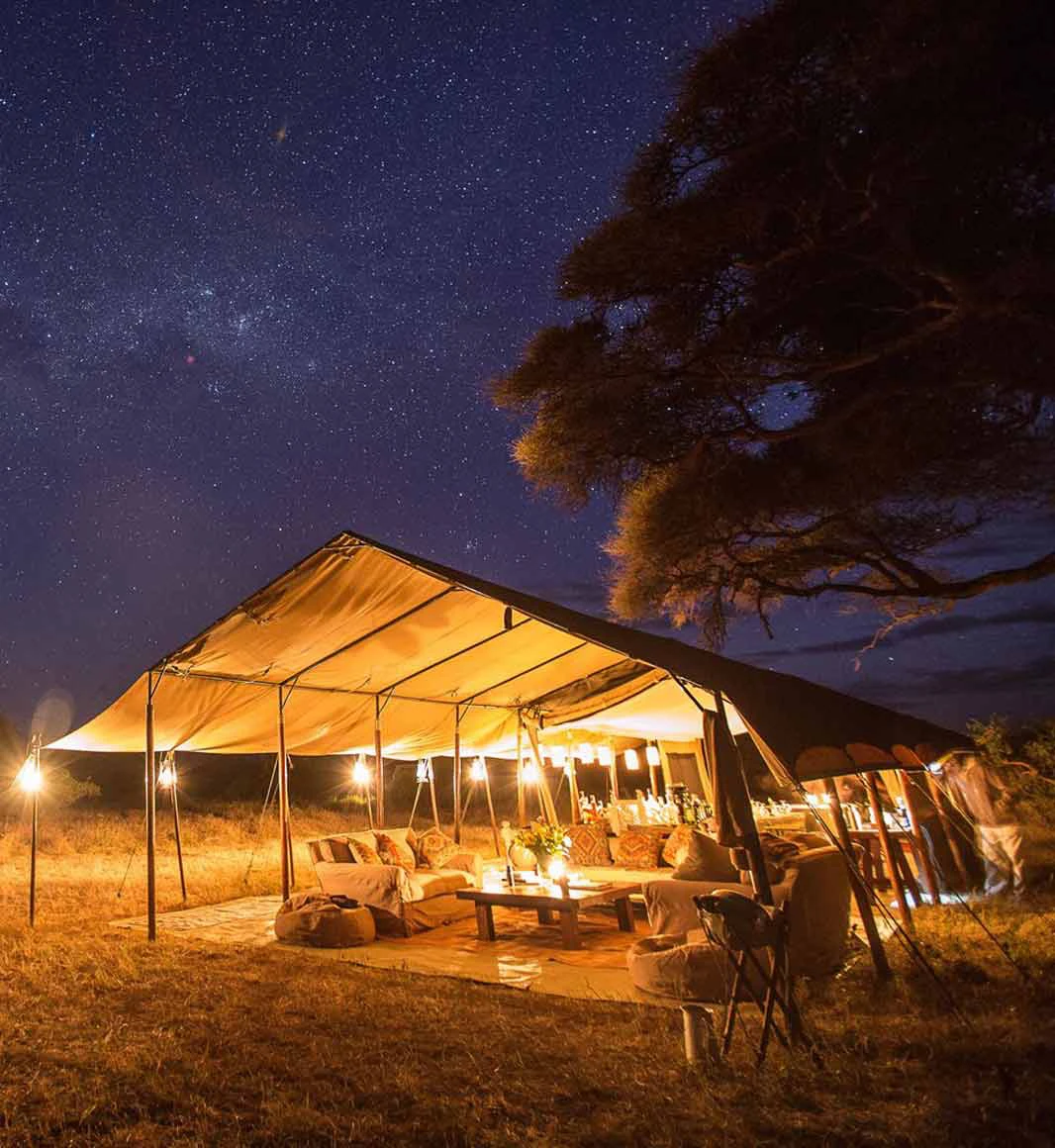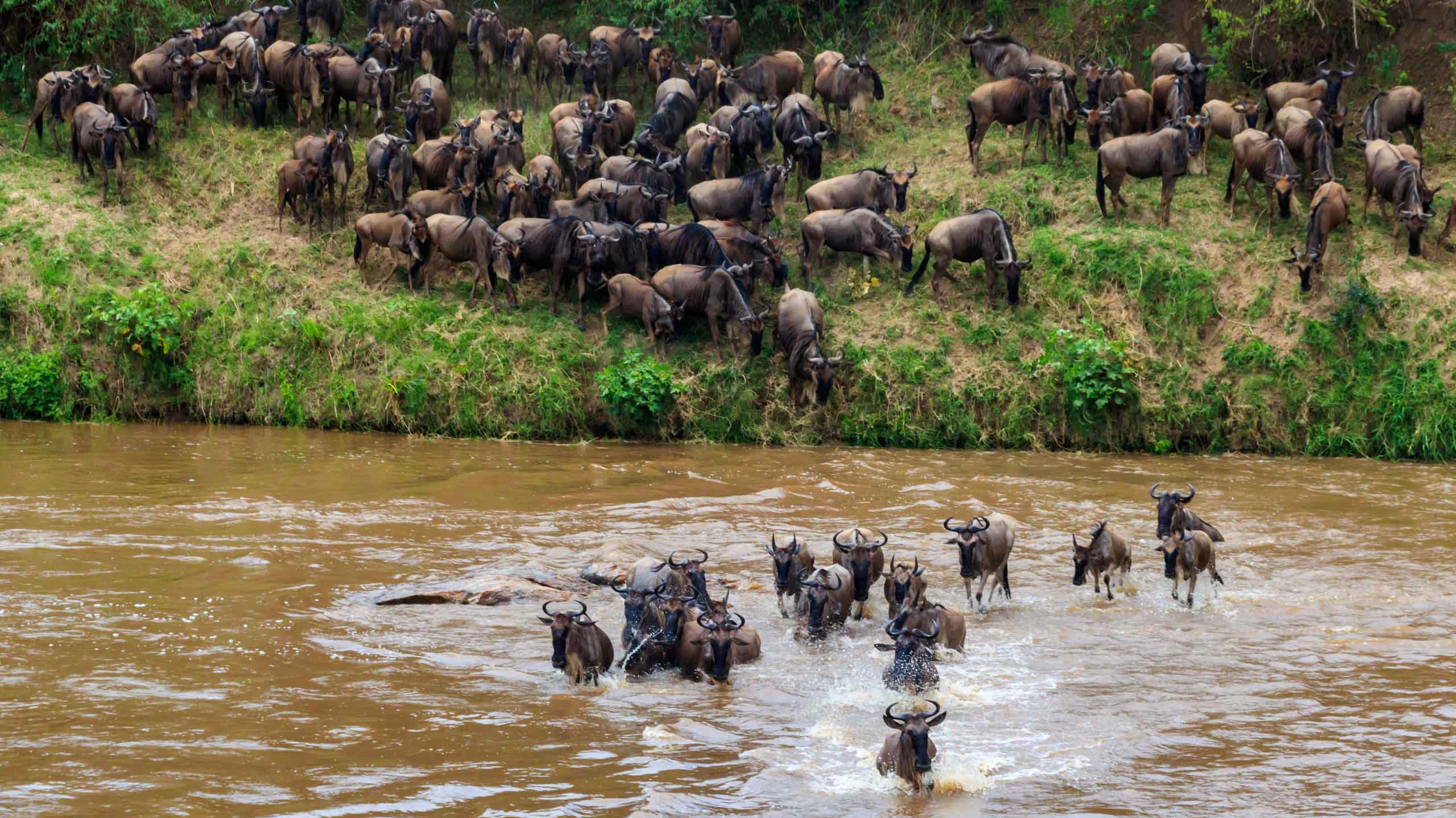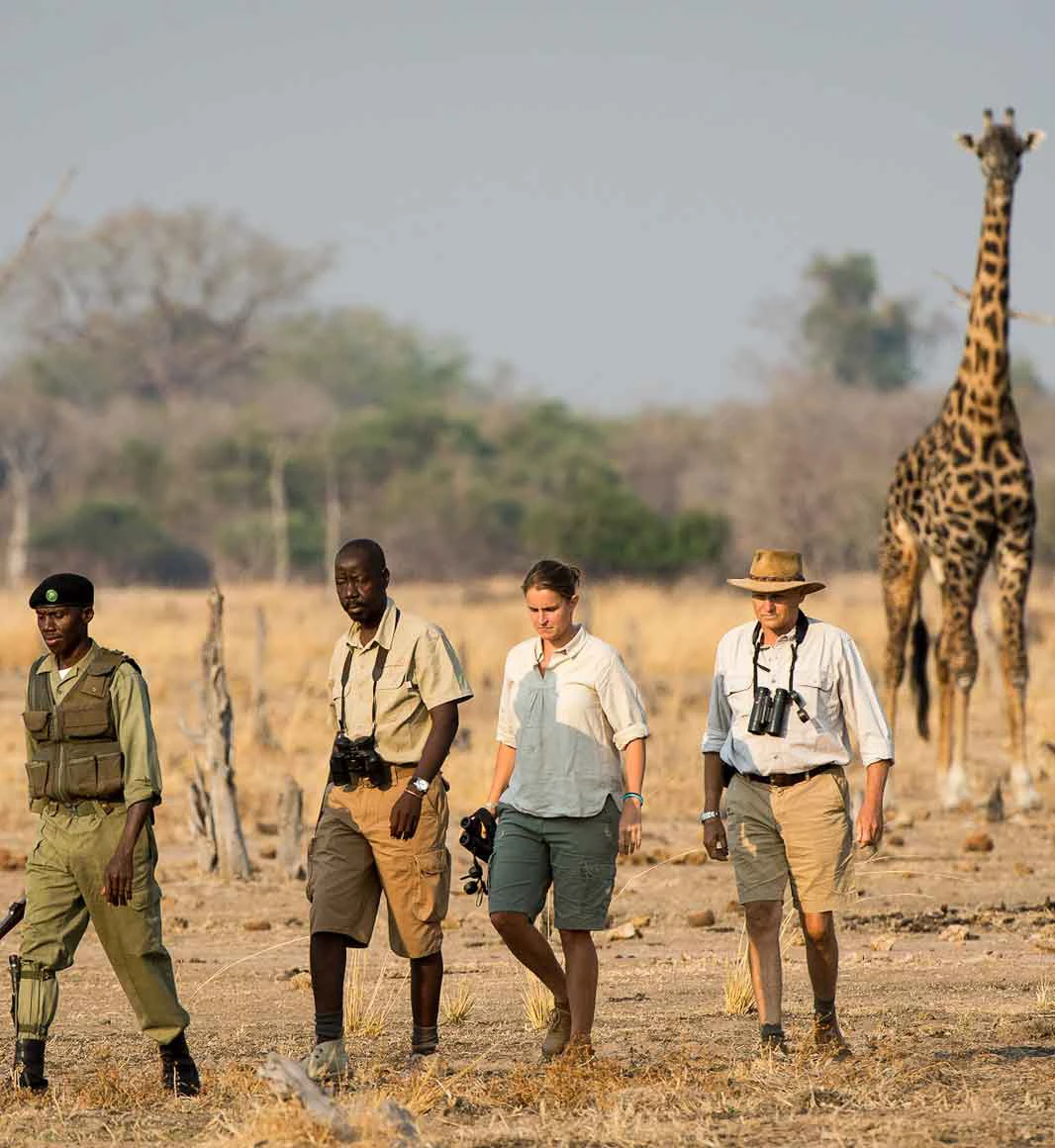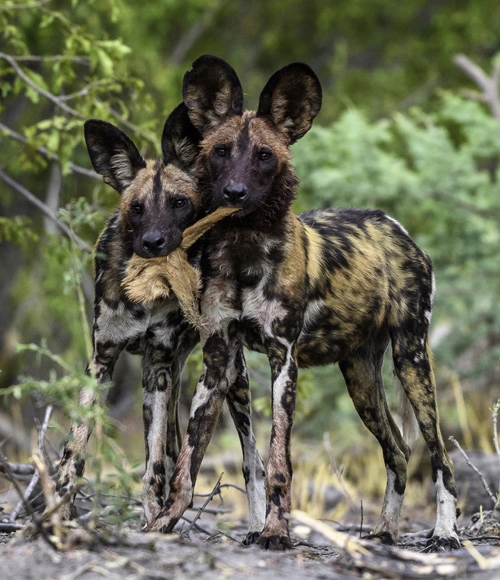
Wild dogs at Little Mombo (© Dana Allen)
Travelling on a secret season safari means you’ll often enjoy wildlife sightings entirely to yourself, while the camps that remain open provide unbeatable value for money.
Why should you consider an off-peak safari to Africa?
Africa’s secret season is a magical time, loved by many locals and considered one of the best times to travel. Fewer crowds, private wildlife sightings, and a more intimate, often more fulfilling experience are hallmarks of this season.
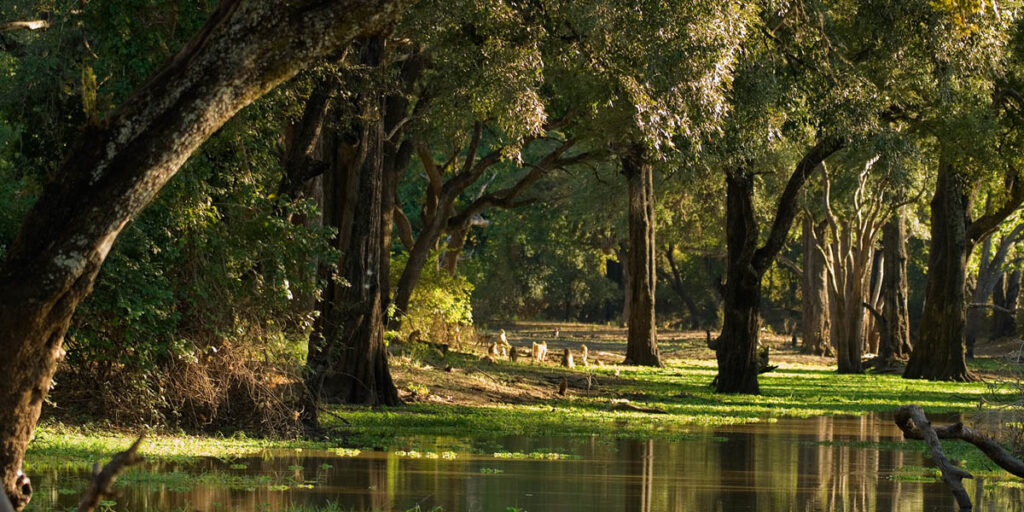
Zambia’s South Luangwa: emerald season wonders (November to March)
During the green season, South Luangwa National Park turns into an emerald paradise. The Zambia’s vibrant wetlands and river landscapes are perfect for boat-based safaris (which also avoids the dreaded black cotton soil), offering an exclusive and immersive wildlife experience.
Navigating through the wetlands, everything is a sparkling, new and verdant green. The lagoons are ideal for birding and game viewing, particularly for migratory birds, such as a huge breeding colony of yellow-billed storks, as well as nesting carmine bee-eaters later in the year. Predators such as leopards are more relaxed and easier to spot.
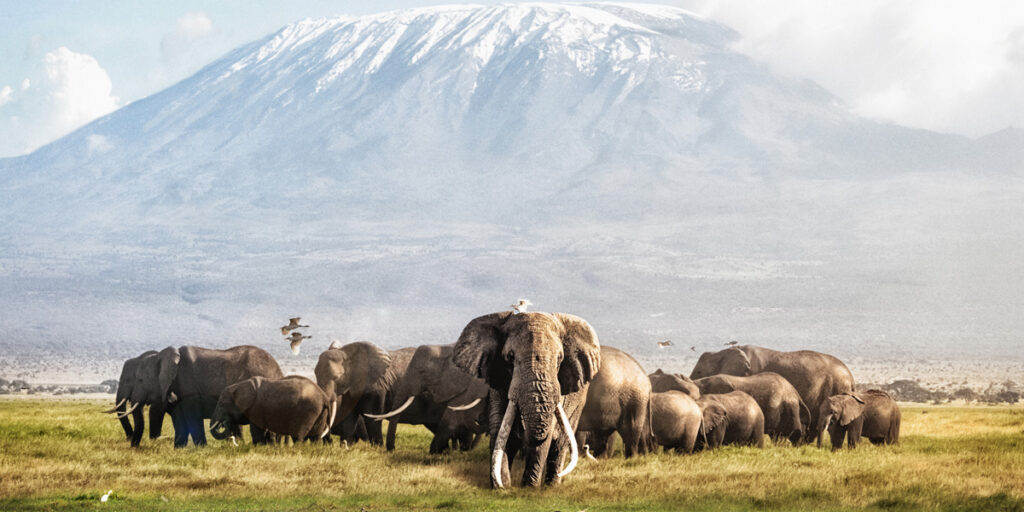
Kenya’s Amboseli for a magical wildflower wonderland (November)
A luxury safari to Kenya’s Amboseli in November is another hidden gem. Amboseli National Park, (a dustbowl for much of the year), transforms into this magical, green carpet, covered with wildflowers, with the majesty of Mount Kilimanjaro protecting its boundary.
This region is renowned for its large herds of elephants, amongst many other species. This is the only time I will venture down there! Tsavo East is similar, as is Samburu in the north, when, in conjunction with the first rains, the area erupts into a sea of green.
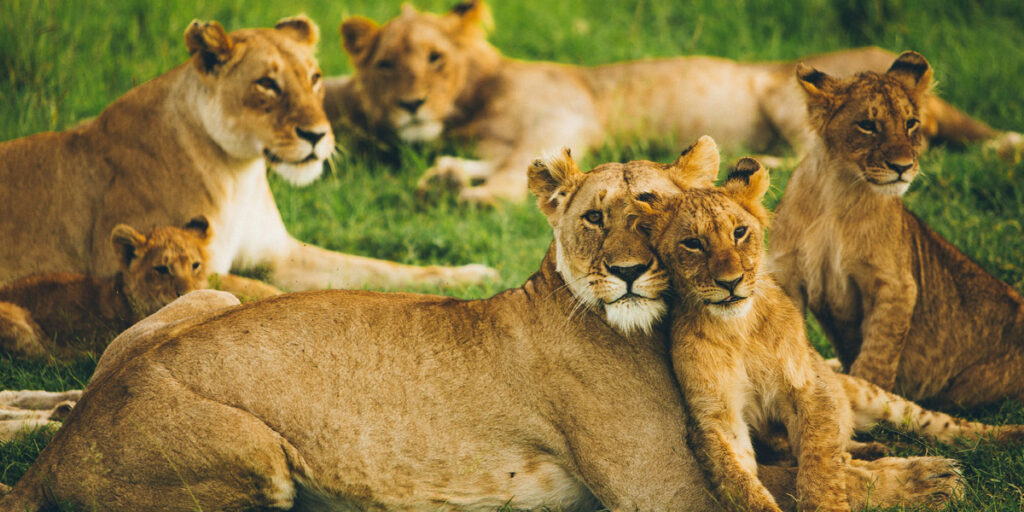
Kenya’s Masai Mara: Post rainy-season lushness (June)
The Green Season transforms the savannahs of the Masai Mara into a vibrant landscape, perfect for private safari adventures. Rainy months are mid-April to mid-June, and November. For me, June is the sweet spot as it marks the transition from the rainy season to the dry season. The rains have settled the dust, making the air crisp and the skies clear, but the plains are still vibrant from the rainy season. This is a fantastic time for wildlife photography, with green vistas and fewer tourists resulting in private safari adventures.
Though you may encounter some rain if you travel in the rainy season, it is important to note that usually when it rains in East Africa you experience short, sharp burst of rains generally in the afternoon and then you are back to having sun.
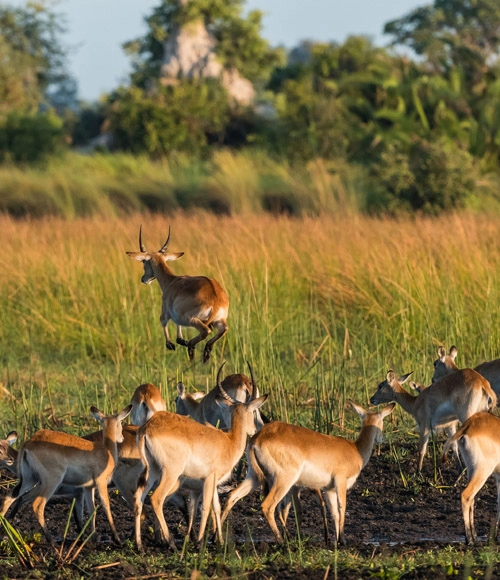
Green season at Xigera Lodge
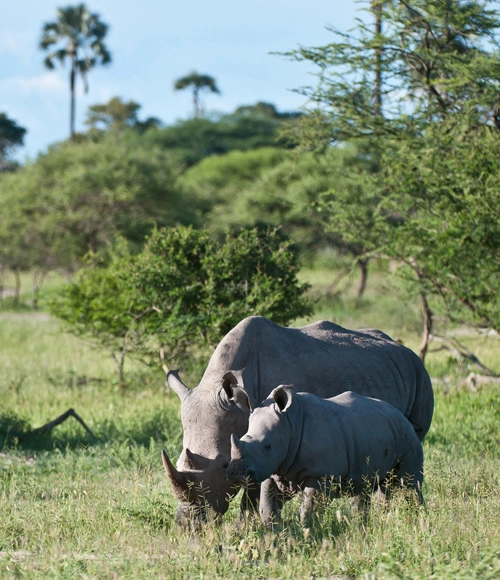
Rhino at Little Mombo (©Russel Friedman)
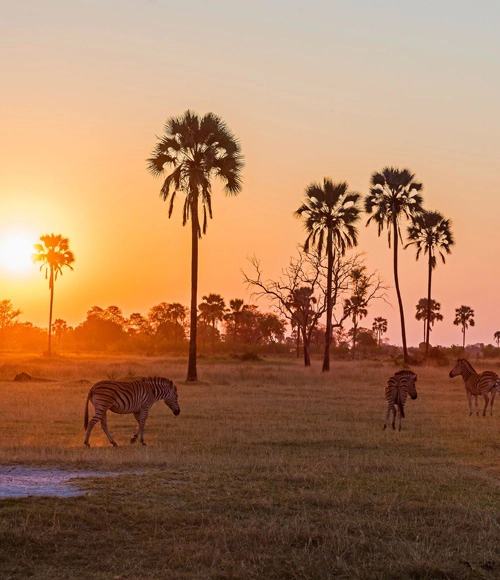
Plains in the secret season at Xigera
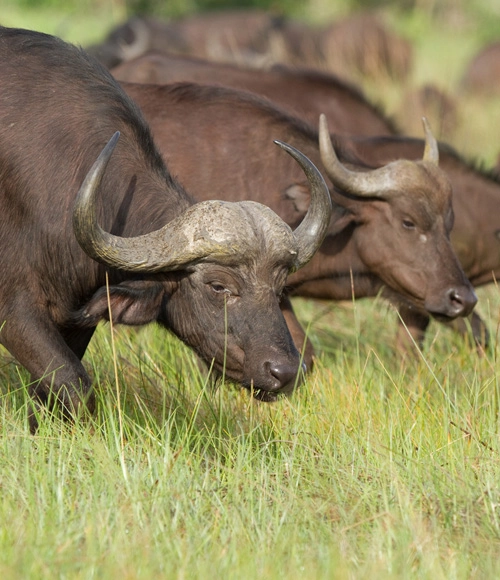
Buffalo at Little Mombo (© Derek De La Harpe)
Botswana’s relaxed summer season (November to April)
An off-peak Botswana safari is extraordinary! Botswana’s summer (November to April) can be hot during the day, with rains falling between mid-November and mid-April, often deterring tourists. However, February is a personal favourite for our Africa specialists. The heavens do open but it only lasts for a couple of hours, simply clearing the air and reducing the temperature.
It is the time when animals are calving, so you witness the miracle of birth. Butterflies abound, wildflowers bloom and migratory birds have returned. With food aplenty, mammals are not stressed, and the foliage offers some cover against prey. It is a happy time, a time of rejuvenation and rebirth.
The Okavango Delta becomes a lush paradise, with water-based safaris offering picturesque wildlife viewing from mokoros or boats.
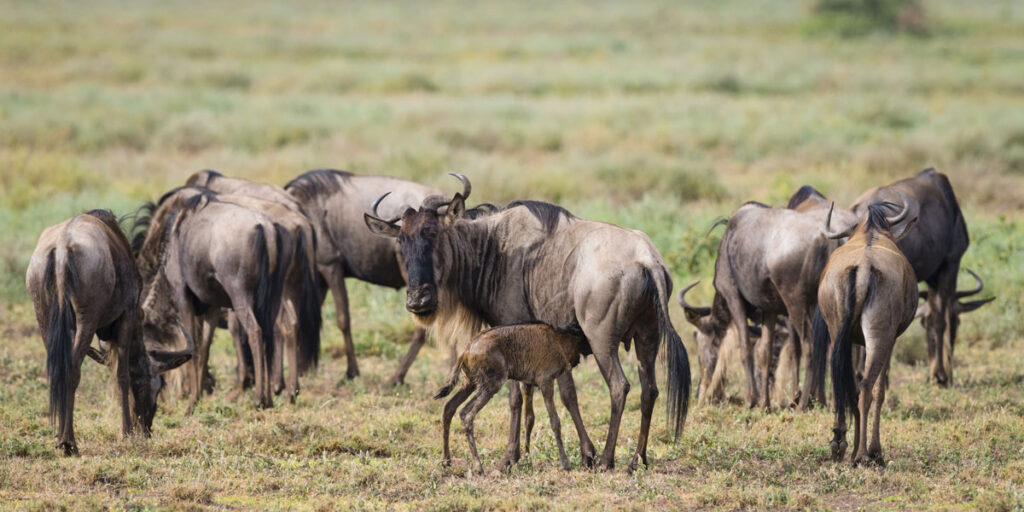
Tanzania’s Serengeti: the thrill of calving season (December to mid-March)
Wildlife viewing in East Africa is excellent year-round, and you can find Tanzania’s Serengeti much quieter during the ‘low’ season. The wildebeest calving occurs between December and March during the green season in the southern Serengeti. Thousands of newborns attract predators and offer thrilling wildlife action. April is one of the finest months to watch the herds in the southern Serengeti. By taking a Great Migration safari during this time you could see thousands of month-old calves and marvel at the wildebeest on the move as they raise great columns of dust clouds.
There is still a fine selection of camps and lodges open and their rates are lower than in peak season. The resident wildlife viewing in the area is fantastic, with plenty of opportunities to see predators and other animals alongside the migrating herds and very few other vehicles vying for sightings.
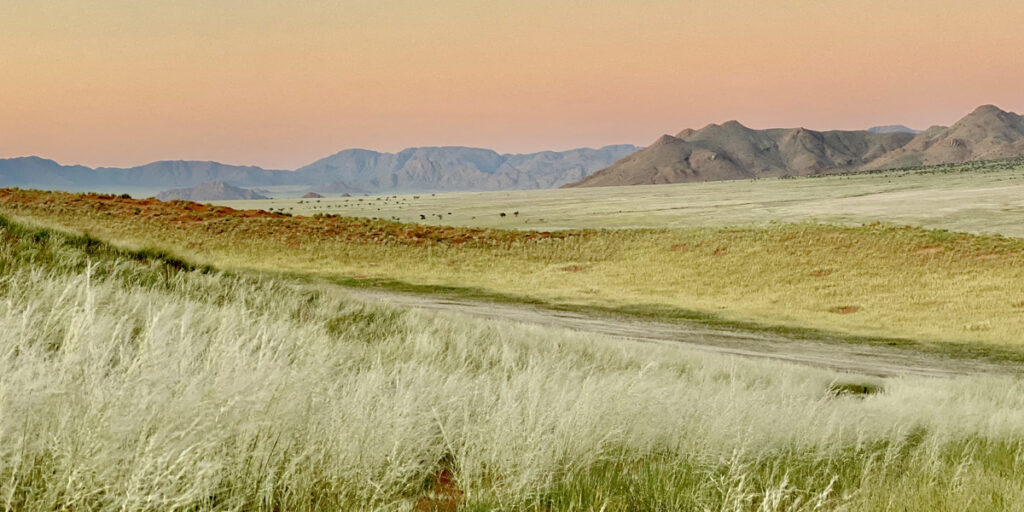
Namibia’s Skeleton Coast: desert in bloom (March to April)
Namibia is mostly desert, making it an excellent destination for off-peak travel (November through to the end of April). With the little rainfall it does receive you can still do and see all you would see in high season, just without the crowds! Lodges generally have more favourable prices at this time.
If you are lucky and it does rain, you might even be able to see parts of its desert completely transform from a dry arid area into a lush, green landscape. Overnight, a sea of lilies emerges from the dry sands, transforming the landscape into a beautiful carpet of vivid pink and white blooms. This time of year is a photographer’s paradise with amazing cloud formations above the desert landscapes making for phenomenal sunsets and sunrises.
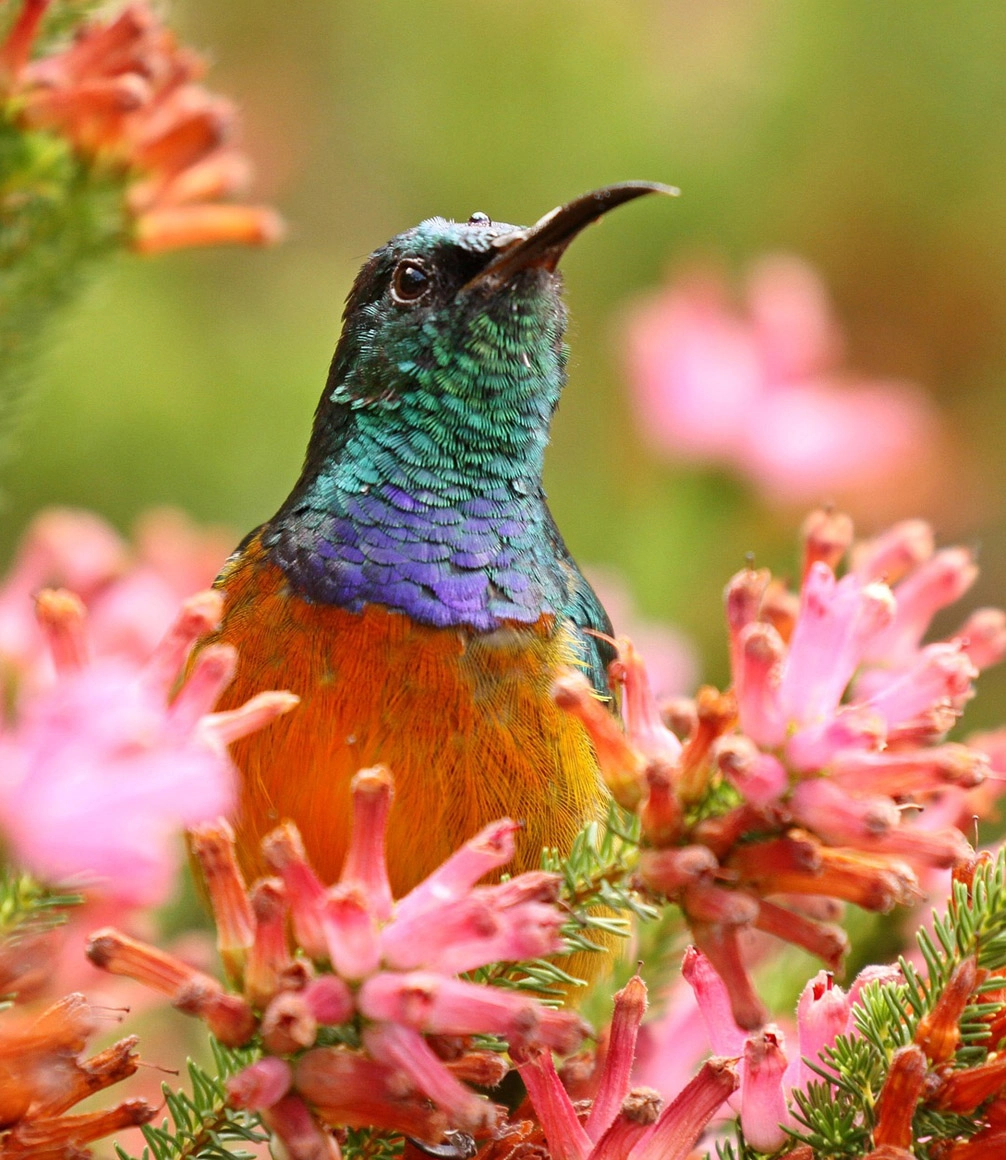
Wildflower season in the Cape
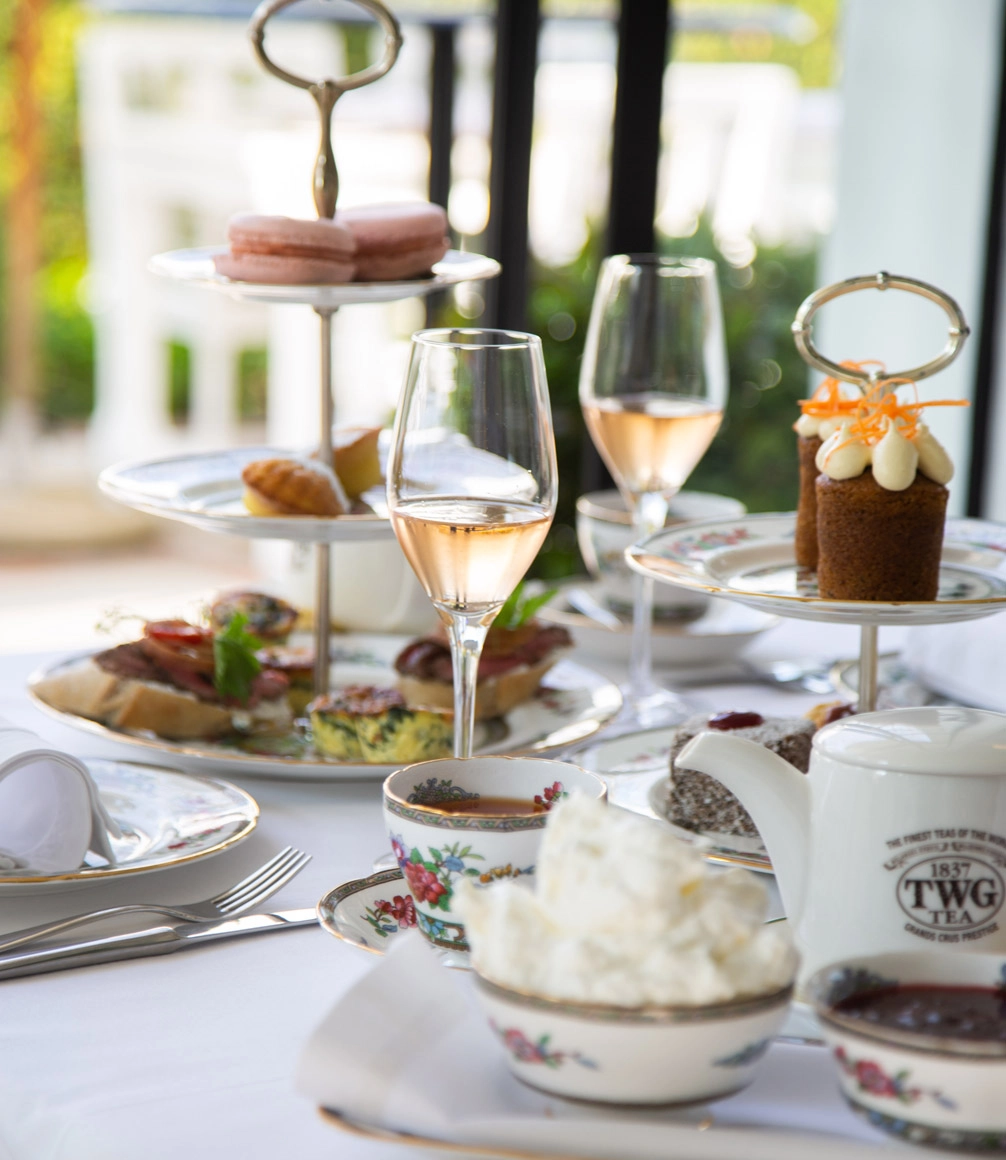
Afternoon Tea at Le Lude Wine Estate
Cape Town, South Africa: wine tasting, wildflowers and whale watching (September)
Cape Town in September is the perfect low-season destination that beautifully combines nature, wildlife, and indulgence. During this time, the Western Cape transitions from winter to spring, bringing sunny days and cool evenings, creating the ideal setting for daytime adventures and cozy evenings, perhaps with a glass of red wine in hand at one of the region’s many vineyards. What makes September truly special is the chance to combine three incredible experiences: wine tasting, whale watching, and viewing the blooming wildflowers.
The Western Cape is renowned for its floral beauty, with wildflowers covering the mountains and fields. September is the best time of the year to witness this stunning natural display. Moreover, September is prime whale-watching season, particularly for southern right whales as they finish their calving period.
Wine lovers are in for a treat too. The wine regions, like Stellenbosch and Franschhoek, are always open, and you can take a wine tram to visit multiple vineyards in a single day. Better yet, stay in one of these wine regions for a few nights, indulging in world-class cuisine paired with some of the best wines South Africa has to offer.
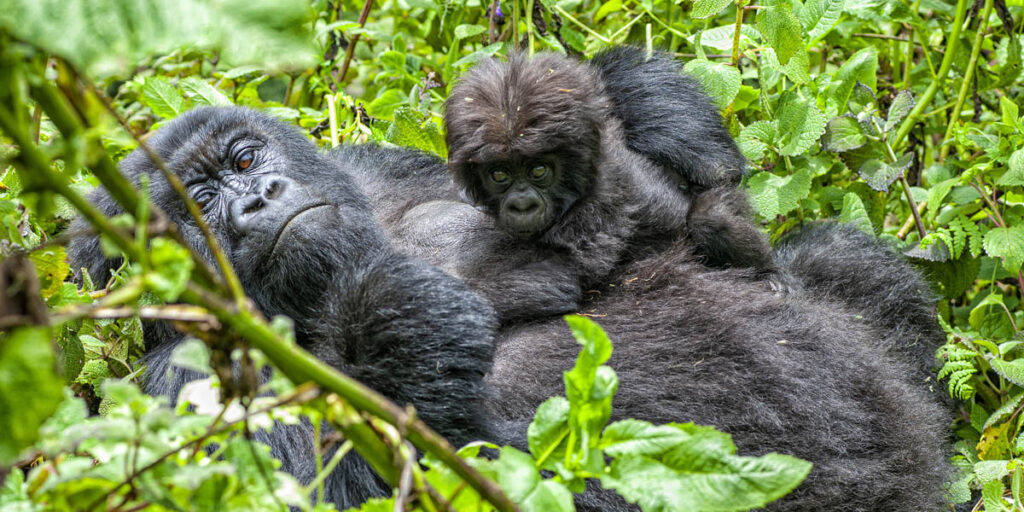
Uganda and Rwanda: gorilla and chimp trekking (March and June)
Gorilla safaris and chimp trekking during the rainy season offers distinct advantages for travellers looking for a more intimate experience in Rwanda and Uganda, particularly in months like March and June at the beginning and end of the rainy season. With fewer tourists opting for these treks the trails are less crowded, creating a more private and personal encounter with the animals in their natural habitat. This quieter atmosphere allows for a deeper connection with nature and a more immersive experience overall.
Although the rain can make the trails muddy and a bit challenging, the forest is at its most vibrant and lush, enhancing the beauty of the surroundings. For photographers, the misty, rainy conditions can create stunning scenery over the forest, with much clearer views compared to dry season as there is no dust. Additionally, accommodations are often more affordable during the low season, making it a cost-effective option for those willing to embrace the slightly wet conditions.
Choosing the best secret season safari for you
Whether you’re captivated by vast spaces devoid of hustle and bustle, private safari experiences and exclusive luxury lodges and camps almost to yourself, taking a luxury safari Africa’s secret season offers an unparalleled opportunity. However it’s important to fully understand the differences in terms of weather and wildlife that you’ll experience when travelling off-peak, so we recommend engaging with an expert to tailor your trip to your requirements. Please do get in touch with our Africa safari specialists for detailed bespoke advice.
Images provided courtesy of Robin Pope Safaris and Wolwedans.
Ready to take the road less travelled?
